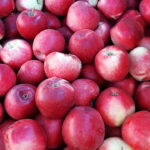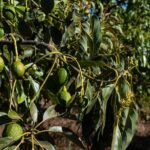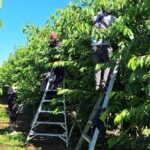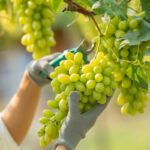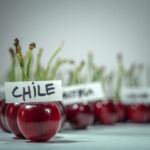ACADES Congress: Water storage, La Niña conditions test Chilean agriculture

The two-day International Congress, "New Water Sources for Chile", opened Wednesday in Santiago with around 800 guests in attendance.
The event, put on by the Chilean Association of Water Desalination and Reuse (ACADES), explores some of the greatest challenges regarding water security, including climate change, regulatory frameworks, and research and innovation.
During the opening day, ACADES President Carlos Foxley said the event had attracted more than double the expected turnout. He told FreshFruitPortal.com the attendance was a testament to the level of interest in water security on a national and international level.
"The truth is that with climate change, there are many regions of our country that are suffering," he said. "We've seen enter places lose massive acreage."
The result has been stress and suffering on a national level, including for agriculture, Chile's largest water consumer - and one of its greatest potential areas to improve efficiencies.
The silver lining, Foxley explained, has been the "tremendous investment effort" from the sector into technologies aimed at solving water-related challenged. Those efforts are needed to prepare for the inevitability of extreme weather events.
"This year, with the forecast of La Niña, conditions are going to change. We have to start thinking about a new framework, and new water sources. We have the solutions," Foxley said. "Let's not keep thinking that the solution is to wait for rain. If it rains, it's great news. But if it does not rain, we cannot put the life of our country at risk."
Former Chilean President Eduardo Frei also spoke and encouraged the country to develop multipurpose reservoirs.
"The agricultural sector in Chile uses 75% of the water and almost 80% ends up in the ocean,” Frei said. “We have to correct that. It can be done."
Gustavo Saltiel, the World Bank's Lead Water and Sanitation Specialist, commented on the importance of integrating different water sources with more traditional water sources in a comprehensive approach.
"I believe that Chile has the institutions and robust systems to tackle the issue of water resource management,” Saltiel said. “We must also move away from the classic methods because surface water is limited. Incorporating new water systems is critical, requiring revision of our planning models."
Saltiel suggested Chile utilize its human and natural resources to its advantage. The country’s long coastline and access to the ocean is a significant advantage.
Water for agriculture
Antonio Walker, president of the National Society of Agriculture (SNA), presented on the water situation in Chile's agriculture sector. Chile measures 75 million continental hectares, he said, with 32 million dedicated to forestry, farming, and livestock development, and only 1.8 million for permanent crops.
"This means that 2.4% of Chile's surface area is used to produce food. And we only irrigate 900,000 of those hectares."
In defense's of agriculture's water footprint he said, "It is true that we consume 75% of the water, but for a very noble purpose: to produce food."
Irrigation efficiency, however, does remain a big, he said.
"We only have 60% of Chile's agricultural surface area using technical irrigation. We still have to increase it to the other 40%," he said. "This is important because line irrigation has a water efficiency of 40-45% and drip irrigation 95% efficiency."
La Niña in Chile
Walker explained that in Chile, desertification is advancing at a rapid pace. The process results in the loss of vegetation in drylands, and arid and semi-arid areas, such as grasslands or shrublands.
By using desalination plants, Walker said water can be used 365 days a year, 24 hours a day, and thus increase storage in reservoirs.
"Chile today has 32 reservoirs," he said. "We have prioritized 26 reservoirs and believe that reservoirs are fundamental to storing water."
He said the arrival of La Niña conditions is expected to bring drier conditions to Chile in 2024.
"It is estimated that we will have less rainfall, more frosts, and much higher maximum temperatures than we had this year," he said. "Therefore, agricultural production will be much more difficult."
Chilean agriculture faces the immediate challenge of adapting to climate change, he explained. This will require improved technologies and greater investments by farmers.
"We must be much more efficient in our water usage, and for that, we need better water management and we need a larger irrigation infrastructure," he said. "We are going to have to double food yields per hectare to be able to satisfy the demand for food."
Walker said Chilean agriculture exports are worth about $19 billion a year. Better irrigation is key to increasing that value.
"We believe we can double the irrigated area if we build water infrastructures that align with Chile's needs," he said. "If we only use 20% of the water being discharged into the sea, we can double Chile's irrigated area and become a great agri-food power."
He estimated 8,000 cubic meters of desalinated water per hectare every year are required to produce one hectare of food. Given Chile's vast coastline, he said the country would be wise to take advantage of desalinated water to increase the acreage of irrigation farmland.

















